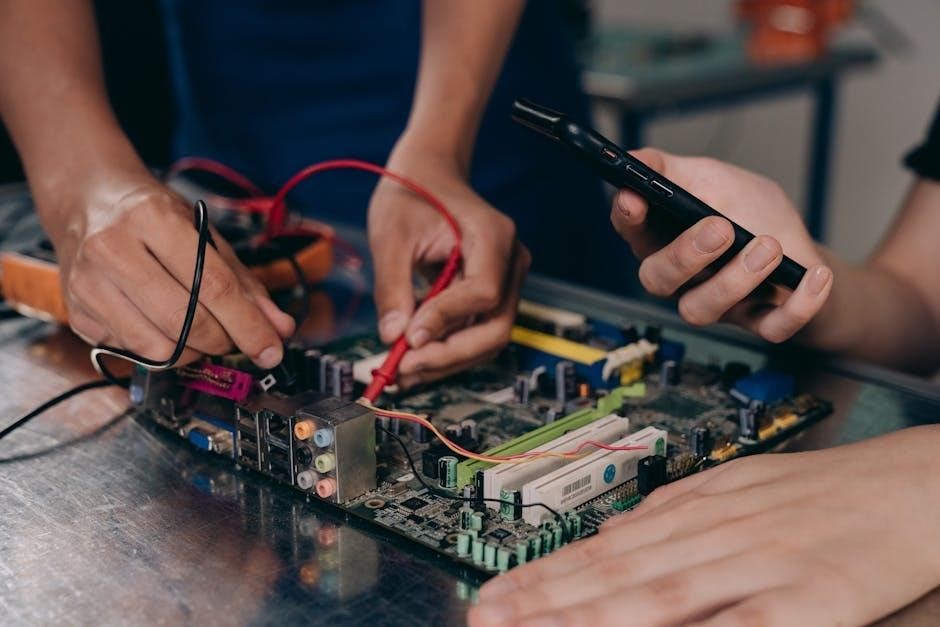Choosing the right bodyboard length is essential for optimal performance, comfort, and enjoyment in the water. It depends on factors like height, weight, and riding style. The ideal length ensures better control, speed, and maneuverability, making your bodyboarding experience more enjoyable. A well-fitted board enhances your ability to catch waves and maintain balance, while the wrong size can lead to discomfort and poor performance. This guide helps you understand how to select the perfect length for your needs, ensuring a fun and successful time in the waves.
Why Bodyboard Length Matters
Bodyboard length is a critical factor in determining performance, control, and overall riding experience. A board that is too short may lack the buoyancy and speed needed to catch waves effectively, while a board that is too long can be difficult to maneuver, especially for smaller riders. The length of the bodyboard directly impacts how it interacts with the water, influencing factors such as stability, acceleration, and responsiveness. Proper length ensures the rider can maintain the right position on the board, making it easier to control movements and balance. Choosing the right length also enhances comfort, allowing riders to paddle, dive, and maneuver with greater efficiency. Ultimately, the correct length ensures a more enjoyable and effective bodyboarding experience.
Key Considerations for Choosing the Right Length
When selecting the ideal bodyboard length, several factors must be considered to ensure optimal performance and comfort. Height and weight are primary influences, as they determine the board’s buoyancy and maneuverability. Taller or heavier riders typically require longer boards for better stability. Body type also plays a role; broader or muscular individuals may benefit from slightly longer boards. Riding style is another crucial factor—prone riders might prefer a shorter board for easier control, while drop-knee or stand-up riders may opt for different lengths. Wave conditions and personal comfort should also be considered to ensure the board feels right and performs well in various settings. Balancing these elements ensures the best fit for your needs.

Understanding Bodyboard Size Charts
Bodyboard size charts are tools that help riders select the appropriate board length based on height and weight, ensuring optimal performance and comfort in the water.
What is a Bodyboard Size Chart?
A bodyboard size chart is a guide that helps riders determine the ideal board length based on their height and weight. It typically correlates these measurements to recommend a range of suitable lengths, ensuring optimal performance, comfort, and control in the water. These charts are designed to cater to various body types and riding styles, providing a starting point for selecting the right board. While size charts can vary slightly between brands, they generally follow a standard framework to help users make informed decisions. Consulting a size chart is essential for beginners and experienced riders alike, as it helps avoid common mistakes like choosing a board that’s too small or too large for their needs.
How to Read a Bodyboard Size Chart
Reading a bodyboard size chart involves matching your height and weight to the recommended board length. These charts are typically presented in a table format, with height ranges on one axis and weight ranges on the other. Locate your height in the left column and cross-reference it with your weight in the top row to find the corresponding board length. Some charts may also include adjustments based on riding style or body type. For accuracy, ensure your height is measured without shoes and your weight is measured without heavy clothing. If your measurements fall between two sizes, consider your riding style: shorter boards for intermediate riders and longer boards for better buoyancy. Always prioritize personal comfort and performance when finalizing your choice.
Typical Size Ranges for Bodyboards
Bodyboard sizes typically range from 33 to 43 inches in length, with most riders opting for boards between 40 and 42 inches. These sizes are designed to accommodate a wide range of heights and weights, ensuring optimal performance. For children or shorter riders, boards around 33-37 inches are ideal, while taller individuals (over 5’8″) may prefer boards closer to 42-43 inches. The size range also correlates with wave conditions, as smaller boards (37-39 inches) are better for maneuverability in smaller waves, while larger boards (40-43 inches) provide stability and buoyancy in larger waves. Always consider your height, weight, and riding style when selecting a size within this range for the best experience.

Factors Influencing Bodyboard Length
Bodyboard length is influenced by height, weight, body type, riding style, and wave conditions. These factors ensure optimal performance and comfort for riders of all levels and preferences.
Height and Its Role in Choosing Length
Your height plays a crucial role in determining the ideal bodyboard length. Taller riders typically benefit from longer boards, as they provide better control and stability in the water. Conversely, shorter individuals may find shorter boards more maneuverable and easier to handle. Generally, a bodyboard should align with your height when stood upright, allowing you to grip the edges comfortably. For most adults, this ranges between 30 and 42 inches, while children and smaller riders may prefer shorter lengths. Height serves as a foundational guideline, but other factors like weight and riding style also influence the final decision. Always test a board’s feel to ensure it suits your needs.
Weight and Its Impact on Board Size
Your weight significantly influences the choice of bodyboard size, as it affects buoyancy and control. Heavier riders typically require longer and wider boards to maintain stability and catch waves effectively. Lighter riders, however, may prefer shorter, narrower boards for better maneuverability. While height often provides a starting point, weight ensures the board’s volume matches your body’s needs. A board that’s too small for your weight may struggle to stay afloat, while one that’s too large might feel cumbersome. Balancing weight with height and riding style ensures optimal performance and comfort. Always consider your weight alongside other factors to find the ideal board size for your bodyboarding experience.
Body Type and Its Influence on Length
Your body type plays a crucial role in determining the ideal bodyboard length. Riders with a larger or more muscular build may prefer a slightly longer board for better stability and buoyancy, while smaller or leaner individuals might find shorter boards more manageable. Body type also affects how you position yourself on the board. For example, those with longer torsos may need a board with extra length to accommodate their lying-down position. Conversely, riders with shorter torsos can opt for shorter boards without sacrificing performance. Balancing your body type with height, weight, and riding style ensures a comfortable and efficient bodyboarding experience. Consider your physique when selecting a board to optimize control and maneuverability in the water.
Riding Style and Its Effect on Length
Riding style is a critical factor in selecting the appropriate bodyboard length. Prone riders typically prefer shorter boards, as they allow for greater agility and easier turns, which is beneficial for performing tricks and navigating tighter waves. On the other hand, those who enjoy drop-knee or stand-up riding may find longer boards more suitable, as they provide additional stability and buoyancy, making it easier to stay upright and maintain balance. The specific length chosen should align with the rider’s primary style to ensure optimal performance and comfort in the water. Personal preference also plays a role, as some riders may prefer a slightly different length than what is generally recommended for their style, based on their skill level or wave conditions.

How to Measure for Your Bodyboard
Measuring for your bodyboard involves assessing your height, weight, and body type to ensure the perfect fit. Stand straight and measure from the floor to the top of your head for height. Weight influences buoyancy, so lighter riders may prefer thinner boards, while heavier riders might opt for thicker ones. Consider your riding style: prone riders often prefer shorter boards for agility, while drop-knee or stand-up riders might choose longer boards for stability. Use a size chart to correlate height and weight with recommended lengths. Additionally, the chin-to-knee measurement is used by some to determine the ideal board length, offering a personalized fit based on body proportions. Always consider wave conditions and personal comfort to enhance performance and enjoyment in the water.
Measuring Your Height for the Perfect Fit
Measuring your height accurately is crucial for selecting the right bodyboard length. Stand straight against a wall with your feet flat on the ground. Use a pencil to mark the top of your head, then measure the distance from the floor to this mark using a tape measure. This measurement provides a baseline for determining your ideal board length. Generally, bodyboard length correlates with rider height, as taller individuals may prefer longer boards for better stability, while shorter riders can maneuver more easily on shorter boards. Ensure the measurement is precise, as even small differences can affect performance. Accurate height measurement helps balance comfort, control, and efficiency in the water, making it a foundational step in choosing the right bodyboard.
Assessing Your Weight for Board Size
Assessing your weight is crucial for selecting the right bodyboard size. Your weight influences the board’s buoyancy and control in the water. Generally, heavier riders may prefer a slightly longer and thicker board for better stability, while lighter riders can opt for a shorter, more maneuverable board. It’s important to consider your weight in relation to your height and riding style for optimal performance. Always consult a size chart or seek expert advice to ensure the best fit for your body type and riding preferences.
Using the Chin-to-Knee Measurement
The chin-to-knee measurement is a practical method to determine the ideal bodyboard length for your body. Lie on the board with your chin just above the nose and your knees gripping the tail. The board should fit comfortably between these two points, allowing you to control it effectively. This measurement ensures the board is proportional to your body, providing optimal maneuverability and stability. It’s particularly useful for riders who prefer prone or drop-knee styles, as it guarantees a natural fit. By using this method, you can find a board that aligns with your physique, enhancing both comfort and performance in the water.

Bodyboard Length for Different Riding Styles
Bodyboard length varies based on riding styles, with prone riders favoring shorter boards, drop-knee riders opting for medium lengths, and stand-up riders preferring longer boards.
Prone Riding and Board Length
Prone riding, the most common bodyboarding style, requires a board that balances maneuverability and speed. For prone riders, a shorter board length (typically 37-43 inches) is ideal, as it allows for easier control and quicker turns. This length range enables riders to lie comfortably on the board while maintaining the ability to shift weight for steering. Taller riders may prefer the upper end of this range for better stability, while shorter riders benefit from a more compact board. The key is to ensure the board is proportional to the rider’s height and weight, providing optimal performance in various wave conditions. Personal comfort and maneuverability should guide the final choice for prone riding enthusiasts.
Drop-Knee Riding and Board Length
Drop-knee riding, a transitional style between prone and stand-up, requires a board length that balances stability and control. Riders in this position benefit from a slightly longer board, typically between 39 and 44 inches, which provides additional buoyancy and support for the partially upright stance. This length allows for easier transitions from prone to drop-knee while maintaining maneuverability. The added length also helps with balance, making it easier to adjust weight distribution. For drop-knee riding, the board should be proportionate to the rider’s height and weight, ensuring optimal performance. A board in this range offers the perfect blend of stability and responsiveness, making it ideal for riders mastering this style or transitioning to stand-up riding.
Stand-Up Riding and Board Length
Stand-up riding, a more advanced style, requires a bodyboard length that enhances stability and control while upright. Typically, boards for stand-up riding range from 39 to 43 inches, providing the ideal balance of buoyancy and maneuverability. This length allows riders to maintain balance and easily shift their weight, crucial for staying upright. Taller or heavier riders may prefer the longer end of this range, while shorter riders might opt for a slightly shorter board. Wave conditions also play a role, with larger waves benefiting from a longer board. Proper length ensures better performance and control, making stand-up riding more accessible and enjoyable for advanced riders. Always consider personal height, weight, and wave type when selecting a board for stand-up riding.

Bodyboard Size Chart Breakdown
A bodyboard size chart categorizes boards by height and weight ranges, helping riders choose the right size for optimal performance and comfort in the water.
Height and Weight Correlation
Height and weight are crucial factors in determining the ideal bodyboard length. Generally, taller riders benefit from longer boards, as they provide better control and stability. Weight also plays a significant role, as heavier riders may require more buoyant boards to stay afloat and maneuver effectively. A common guideline is to match your height and weight to a board length that falls within a recommended range, typically between 30-45 inches. For example, a rider around 5’2″ and 120-140 lbs might opt for a 40-inch board, while a taller, heavier rider (6’0″ and 180-200 lbs) might prefer a 43-inch board. Balancing these factors ensures optimal performance and comfort in the water.
Size Chart for Beginners
For beginners, choosing the right bodyboard length is essential to ensure comfort and ease of learning. A general rule is to start with a board that matches your height and weight, as this will provide the best balance and control. Beginners typically find boards in the 37-41 inch range suitable, as they are easy to handle and maneuver. Lighter riders or younger surfers may prefer shorter boards, while taller or heavier individuals might need slightly longer ones. Soft-top boards with rounded noses are recommended for safety and buoyancy. Always consider your body type and riding style when selecting a size. Trying out different sizes can help you find the perfect fit, so don’t hesitate to seek advice or test boards before making a purchase.
Size Chart for Advanced Riders
Advanced riders often prefer bodyboards tailored to their specific needs, with sizes ranging from 41 to 43 inches for most experienced surfers. These lengths provide optimal control and maneuverability in varying wave conditions. Lighter riders may opt for shorter boards (around 40-41 inches) for tighter turns, while heavier or taller riders might prefer slightly longer boards (42-43 inches) for added stability and speed. The board’s width and thickness also play a role, with narrower boards offering more agility and thicker boards providing extra buoyancy. Advanced riders should consider their riding style, wave preferences, and personal comfort when selecting a size. Testing different sizes can help refine your choice for peak performance.

Sample Size Chart and Its Interpretation
A sample size chart typically organizes bodyboard lengths based on rider height and weight. For example, a rider between 5’0″ and 5’6″ (152-168 cm) and 120-150 lbs (54-68 kg) might suit a 42-inch board. Heavier riders (150-180 lbs or 68-82 kg) of the same height may prefer a 43-inch board for added buoyancy. Taller riders (5’7″ and above or 170 cm+) usually opt for 43-45-inch boards, depending on their weight and riding style; The chart helps match these dimensions to ensure the board performs well in various wave conditions. By aligning height, weight, and length, riders can achieve better control, speed, and overall performance in the water.

Special Considerations for Bodyboard Length
Wave conditions, rider experience, and personal preference also play a role in choosing the right length. Experts may adjust sizes for specific wave types or performance needs.
Wave Conditions and Board Length
Wave conditions significantly influence the ideal bodyboard length. In small waves, a shorter board (around 40-41 inches) is preferable for easier maneuverability and catching waves. For medium waves, a mid-length board (41-42 inches) offers a balance between speed and control. In heavy or large waves, a longer board (42-43 inches or more) provides stability and momentum. The board’s length should match the wave’s power and size to ensure optimal performance. Riders in varied wave conditions may benefit from having multiple boards tailored to different scenarios. Understanding wave dynamics helps in selecting the right length for enhanced surfing experiences.
Bodyboard Length for Different Wave Types
Bodyboard length varies depending on wave types. For beach waves, which are typically smaller and softer, a shorter board (around 40-41 inches) is ideal for easier maneuverability. Reef waves, which are faster and hollow, require a slightly longer board (42 inches or more) to maintain control and speed. Point waves, offering a mix of speed and size, suit mid-length boards (41-42 inches) for balance. Larger, heavier waves benefit from longer boards (43 inches or more) to handle power and maintain stability. Riders should adjust their board length based on wave type to maximize performance and comfort in the water.
Expert Tips for Choosing the Right Length
Always consider both your height and weight when selecting a bodyboard length. A longer board may suit taller or heavier riders, while shorter boards are better for smaller frames.
Pay attention to your riding style. Prone riders often prefer shorter boards for agility, while drop-knee or stand-up riders may opt for slightly longer boards.
Test different sizes if possible. Personal comfort and performance can vary, so don’t hesitate to try out various lengths.
Consider wave conditions. Shorter boards excel in small waves, while longer boards are better for larger, faster waves.
Seek advice from experienced riders or use size charts as a guide, but remember, the best length is one that feels right for you.
Keep in mind that there’s no one-size-fits-all solution—experiment to find your ideal match for optimal performance.

Common Mistakes in Choosing Bodyboard Length
Ignoring height and weight guidelines can lead to poor performance.
Overlooking riding style and wave conditions often results in dissatisfaction.
Neglecting personal comfort and performance needs is a frequent error.
Ignoring Height and Weight Guidelines
One of the most common mistakes when selecting a bodyboard is disregarding height and weight guidelines. Many riders assume that any board will work, but this can lead to poor performance and discomfort. A board that is too short may lack buoyancy, making it difficult to catch waves, while a board that is too long can be unwieldy and hard to control. Height and weight are critical factors in determining the ideal board length, as they directly affect how the rider interacts with the water and the board’s responsiveness. By ignoring these guidelines, riders risk compromising their ability to maneuver effectively and enjoy a smooth riding experience. Always prioritize matching your bodyboard length to your physical dimensions for optimal performance.
Overlooking Riding Style and Wave Conditions
Another frequent error is neglecting the importance of riding style and wave conditions when choosing a bodyboard length. Riders often prioritize personal preference over practicality, which can hinder performance. For instance, a prone rider may benefit from a slightly shorter board for better control, while a drop-knee or stand-up rider might need more length for stability. Additionally, wave conditions play a crucial role; smaller waves require a longer, more buoyant board, whereas larger waves demand a shorter, more maneuverable option. Ignoring these factors can result in reduced performance, difficulty catching waves, and a less enjoyable overall experience. Always consider your riding style and the typical wave conditions you encounter when selecting a bodyboard length to ensure optimal functionality and fun in the water.
Neglecting Personal Comfort and Performance
Neglecting personal comfort and performance is a common mistake when selecting a bodyboard length. A board that doesn’t align with your body’s needs can lead to discomfort, fatigue, and poor performance in the water. Riders often overlook how their physical characteristics, such as shoulder width and arm span, affect their ability to control the board. Additionally, a board that is too small or too large can hinder maneuverability and speed, making it harder to catch and ride waves effectively. Prioritizing comfort ensures better control and confidence, while optimizing performance allows riders to maximize their skills and enjoyment. Always consider how the board feels during use and adjust accordingly for the best results.
Choosing the right bodyboard length is crucial for optimal performance and comfort. Consider height, weight, and riding style to make an informed decision. Test different sizes to find your perfect fit.

Final Tips for Optimal Performance
To maximize your bodyboarding experience, test different board lengths in various conditions to find your ideal fit. Consider wave types and adjust your board size accordingly for better control and maneuverability. Prioritize personal comfort and ensure the board feels balanced under your body. Seek advice from experienced riders or professionals to refine your choice. Maintain your equipment regularly to ensure optimal performance. Focus on improving your technique, as skill level can influence how a board responds. Experiment with slight size variations to adapt to changing conditions or riding styles. Most importantly, practice patience and persistence—mastering bodyboarding is a journey. Enjoy the process and the thrill of the ride!
Encouragement to Try Different Sizes
Don’t hesitate to experiment with different bodyboard sizes to discover what works best for you. Each size offers unique performance benefits, and your preferences may evolve as you gain experience. Smaller boards can enhance maneuverability and speed, while larger ones provide stability and buoyancy. If you’re unsure about your ideal size, consider renting or borrowing boards of varying lengths. This hands-on approach will help you identify the perfect fit for your height, weight, and riding style. Remember, there’s no one-size-fits-all solution, so embrace the process of exploration. Trust your instincts and prioritize how the board feels under your body. The right size will boost your confidence and elevate your performance in the water.


















































